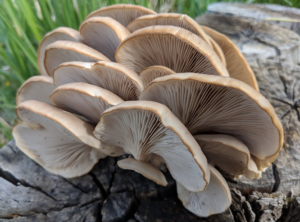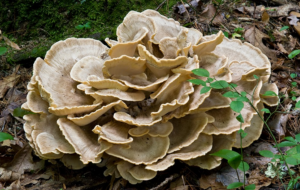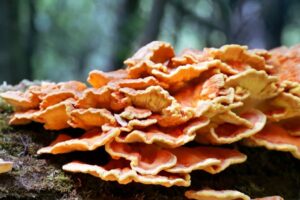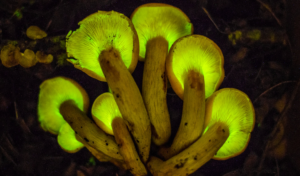Ready to take your foraging game to the next level?
Foraging for edible mushrooms is one of the most rewarding and delicious activities in the outdoor world. Before diving into the unknown world, it’s essential to familiarize yourself with some expert tips and tricks. We’ve got you covered on all of the essentials you need to forage for edible mushrooms confidently.
From oyster mushrooms to chicken of the woods, here is what you need to know to forage confidently.
Identifying the Mushrooms
One of the most intimidating parts of foraging is correctly identifying the edible mushrooms. Spore printing is a great option to ensure you’ve picked the right ones. Start by slicing off the stem and laying the cap and gills down on a paper bag, dark surface, jar lid, or Tupperware lid, and wait for the spore coloring.
In addition, you can use apps, books, online searches, and asking others in the know are all great ways to positively identify plants and fungi.
Foraging Tips
Oyster Mushrooms (Pleurotus Ostreatus)

Oyster mushrooms feed on deadwood, which means they are saprotrophic. They have a fishy smell, although some think it is more of a black licorice smell. To identify, the cap of oyster mushrooms should be oyster or fan-shaped.
They have close decurrent gills, meaning they’re attached to the stem and run most of the way down it. Oyster mushrooms produce a white spore print.
A favorite way to cook oyster mushrooms is with two cast iron skillets. Use one to press and get the water out of the clusters as they brown, then add oil and season them. Slather in BBQ sauce and finish in the oven for delicious pulled pork-like patties.
Black Staining Polypore (Meripilus Sumstinei)

Black staining polypores are light in color, flat, and grow in clusters near hardwood trees (primarily oak trees). The identifying factor here is the staining test. If it stains black once you touch it, then it’s a black-staining polypore.
The caps are primarily white with colors of yellow and gold on the margins. The spore print is white. They are edible but not as choice as the hen and chicken varieties. To incorporate, sauté and add to shredded chicken dishes or chili.
Chicken of the Woods (Laetiporus)

Probably the easiest mushroom to identify, Chicken of the Woods has bright orange with yellow edges that can’t be missed. They have a strong floral smell and are found by oaks, still standing or fallen, and other hardwoods in Europe and North America.
The caps are typically between 2 to 12 inches wide and form clusters that can get more than 30 inches across. As they age, the flesh of the chicken of the woods hardens and gets flaky. When cooked, they have the consistency and taste of chicken and are highly sought after. Egg wash and season with Old Bay or Red Eye Hog to make chicken-like nuggets.
Safety
While taking precautions is necessary, the three mushrooms mentioned have nearly no poisonous lookalikes. However, the highly poisonous Jack O’lantern Mushroom (Omphalotus Olearius) is sometimes confused with chicken of the woods or chanterelle mushrooms.

It has earned its name because of the dark orange pumpkin color and its glow around the Halloween season. Eating this mushroom will result in severe gastrointestinal distress and extreme nausea, vomiting, and weakness.
If you’re unsure, get three sources of confirmation and try a small amount first. It’s also essential to practice good mushroom etiquette. Leave some for others, and carry your cache out in a mesh bag or basket to help spread more spores. Always remember to have fun and be safe.


